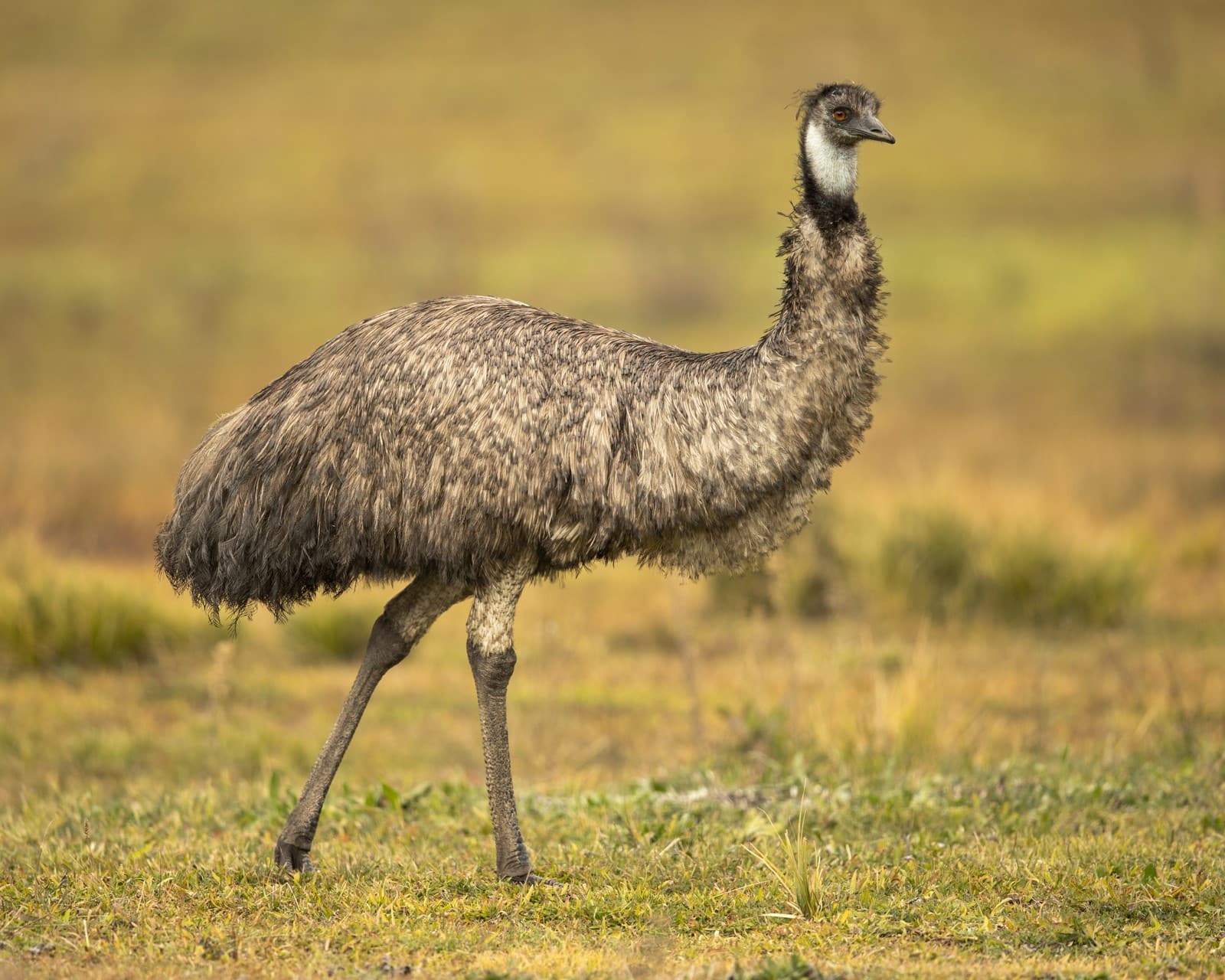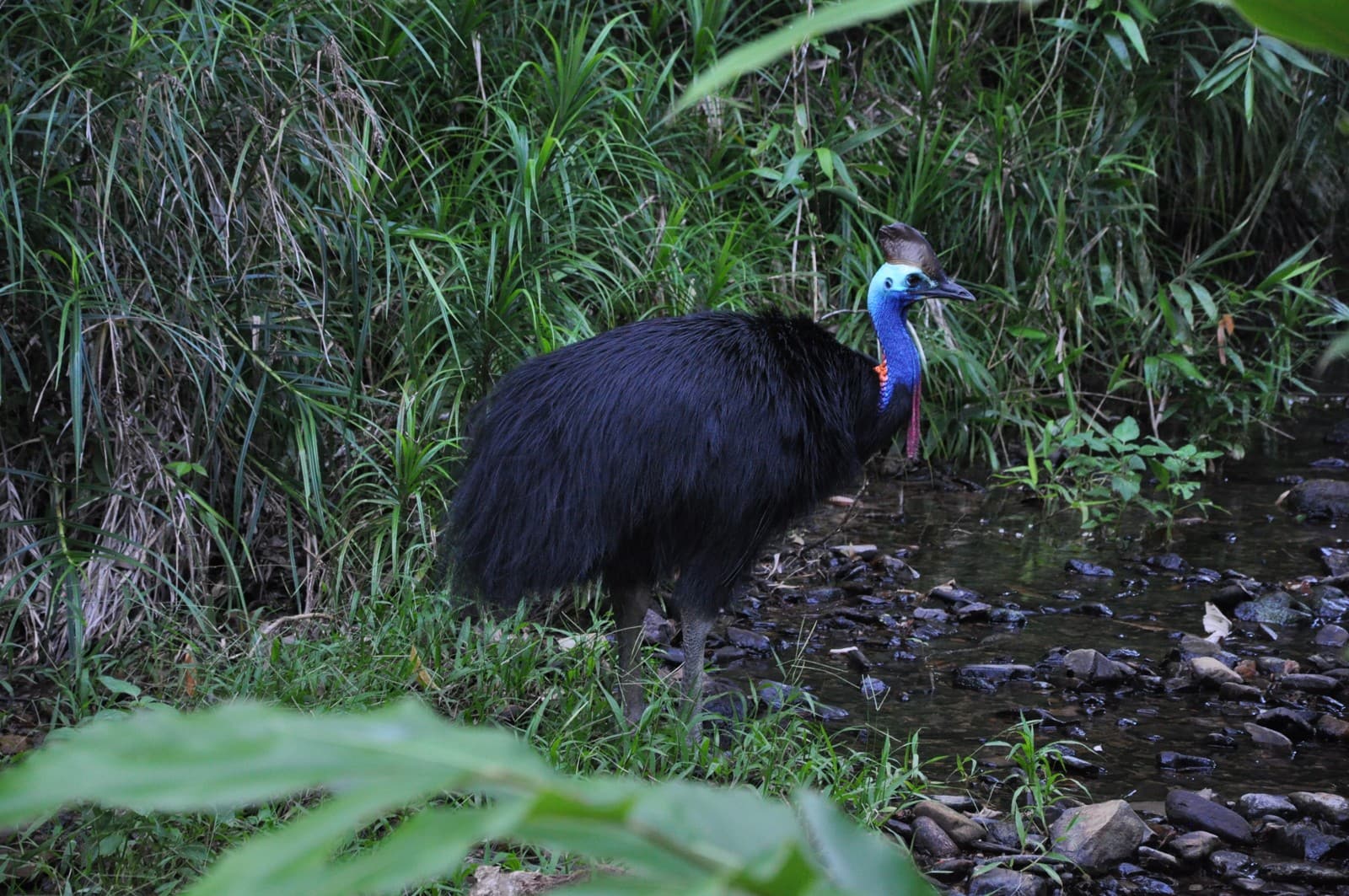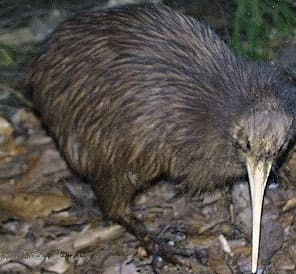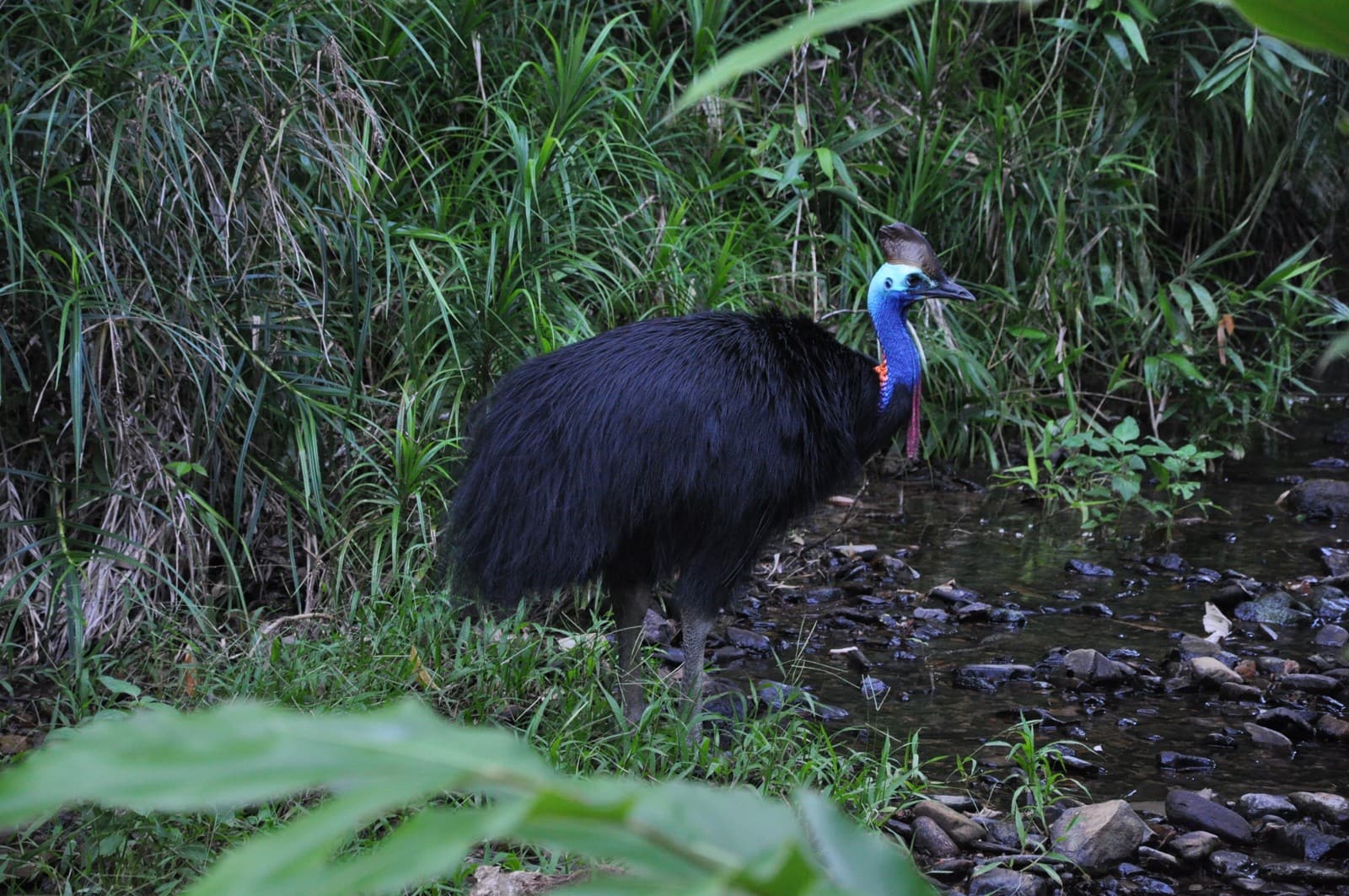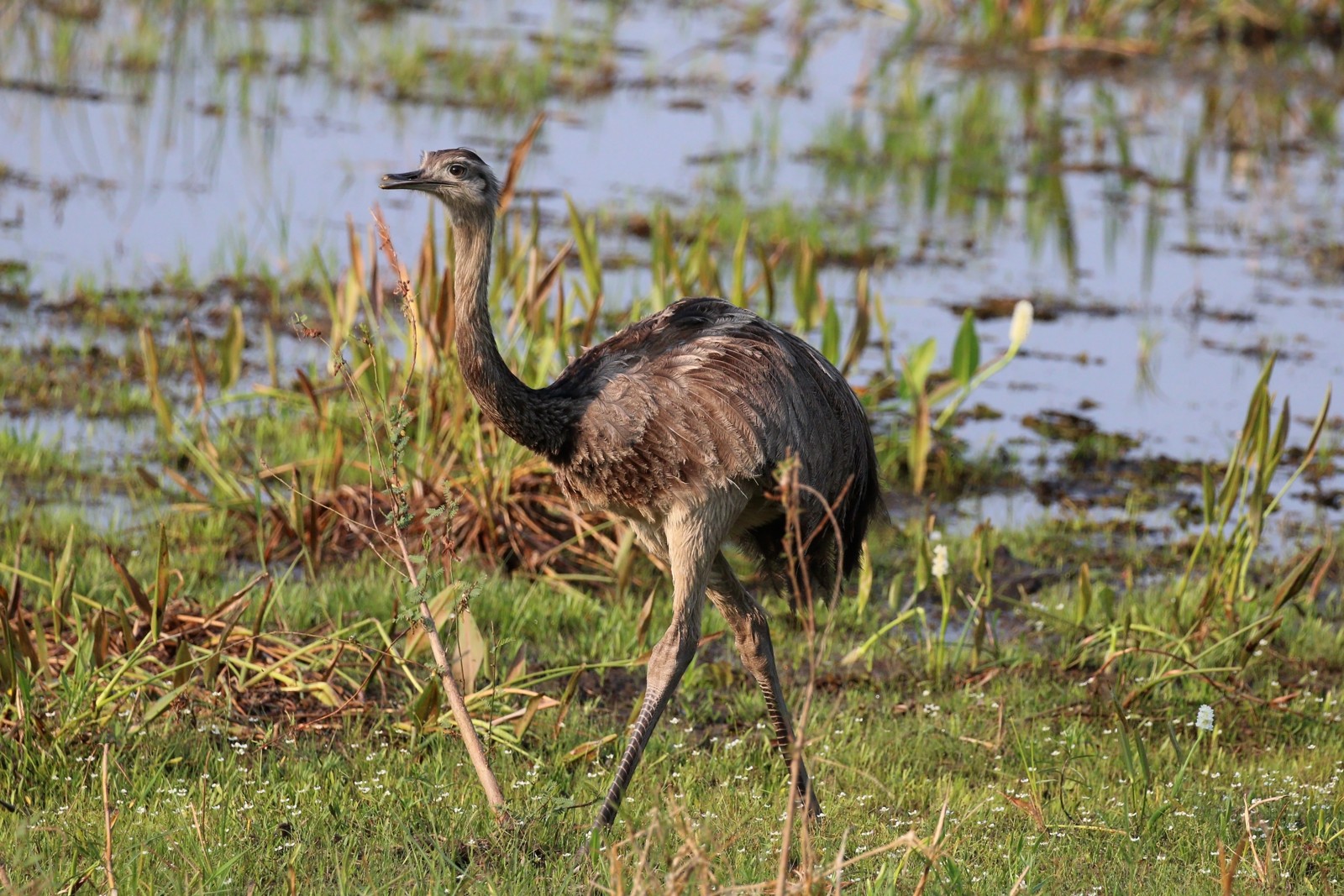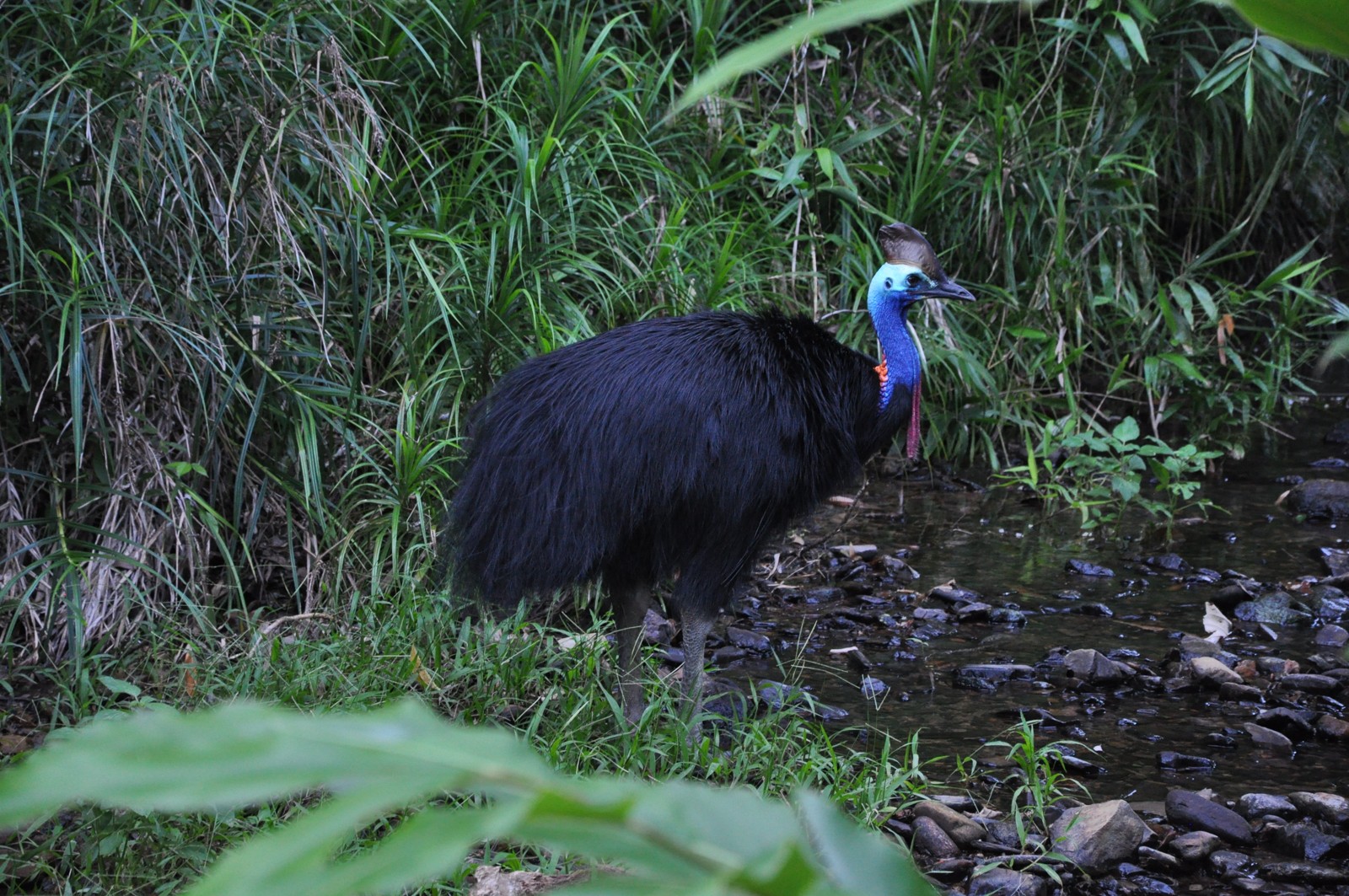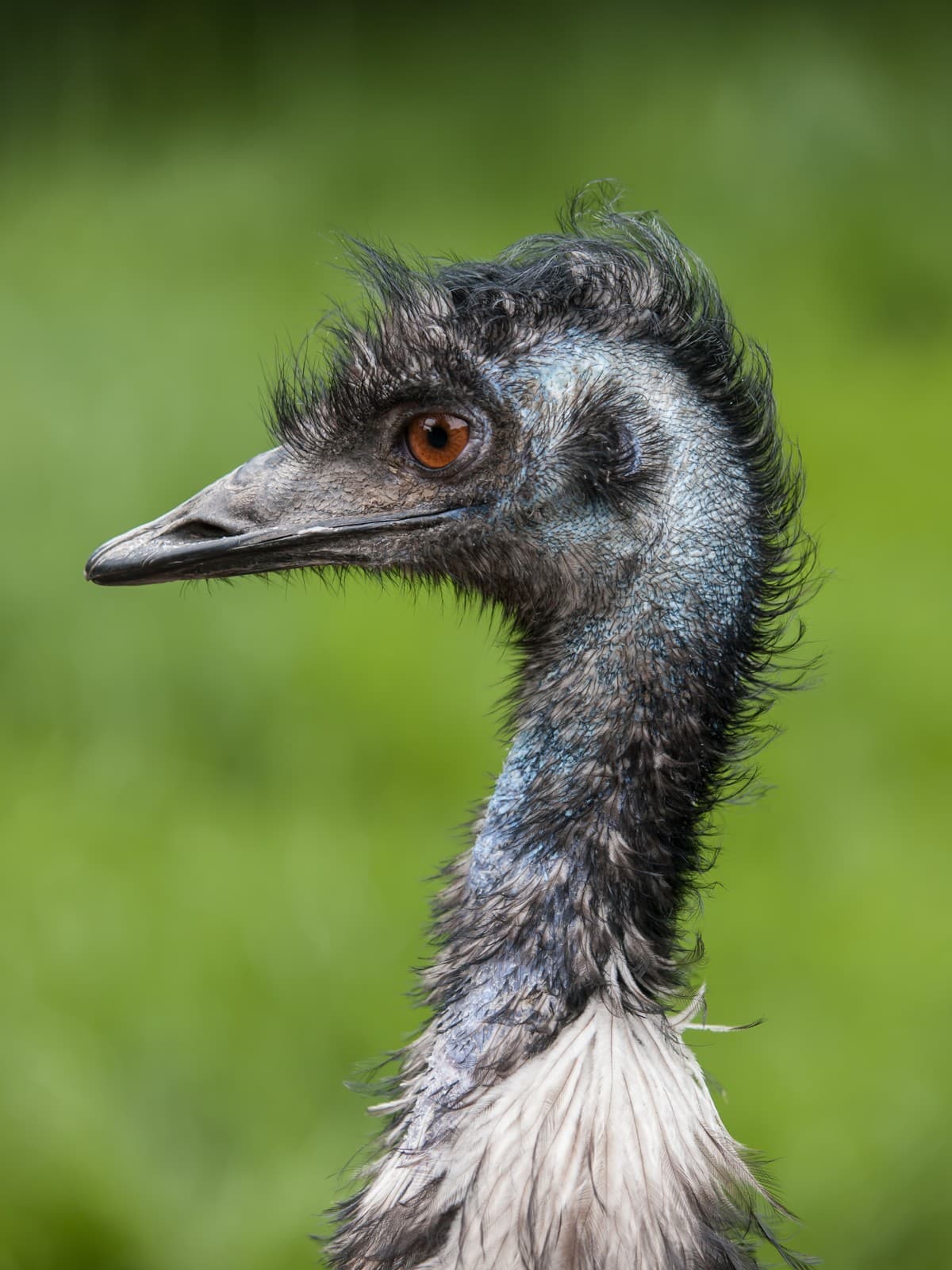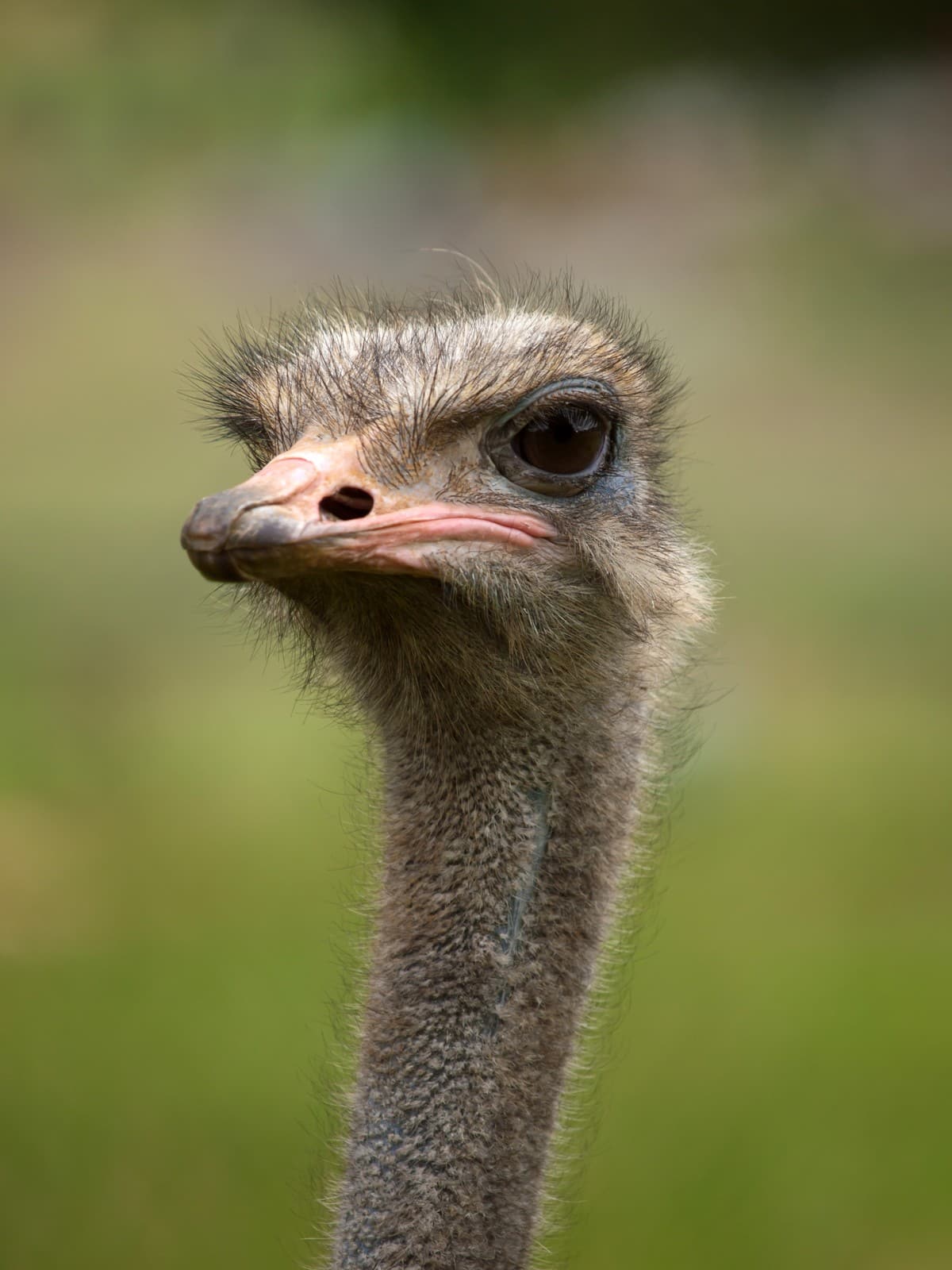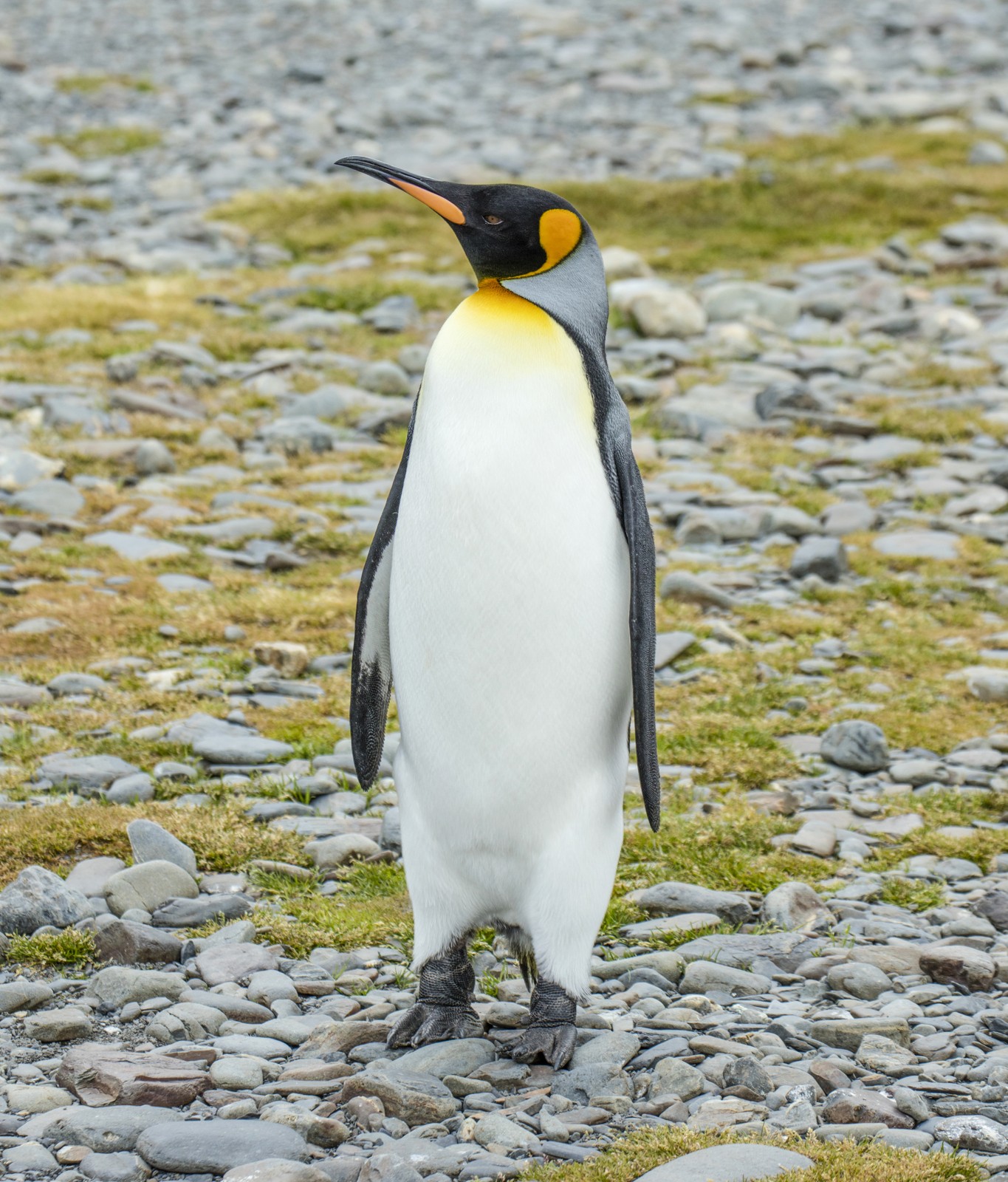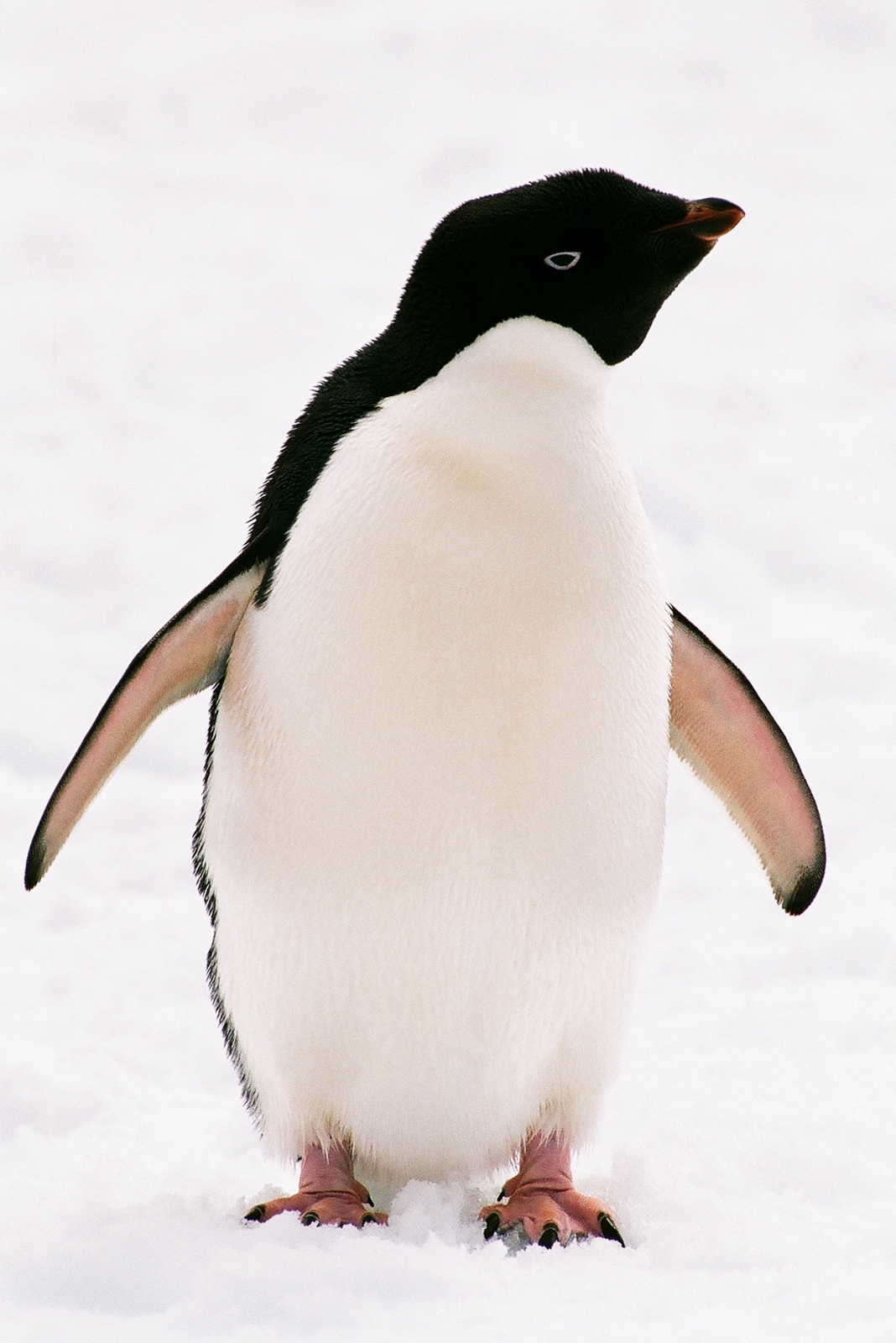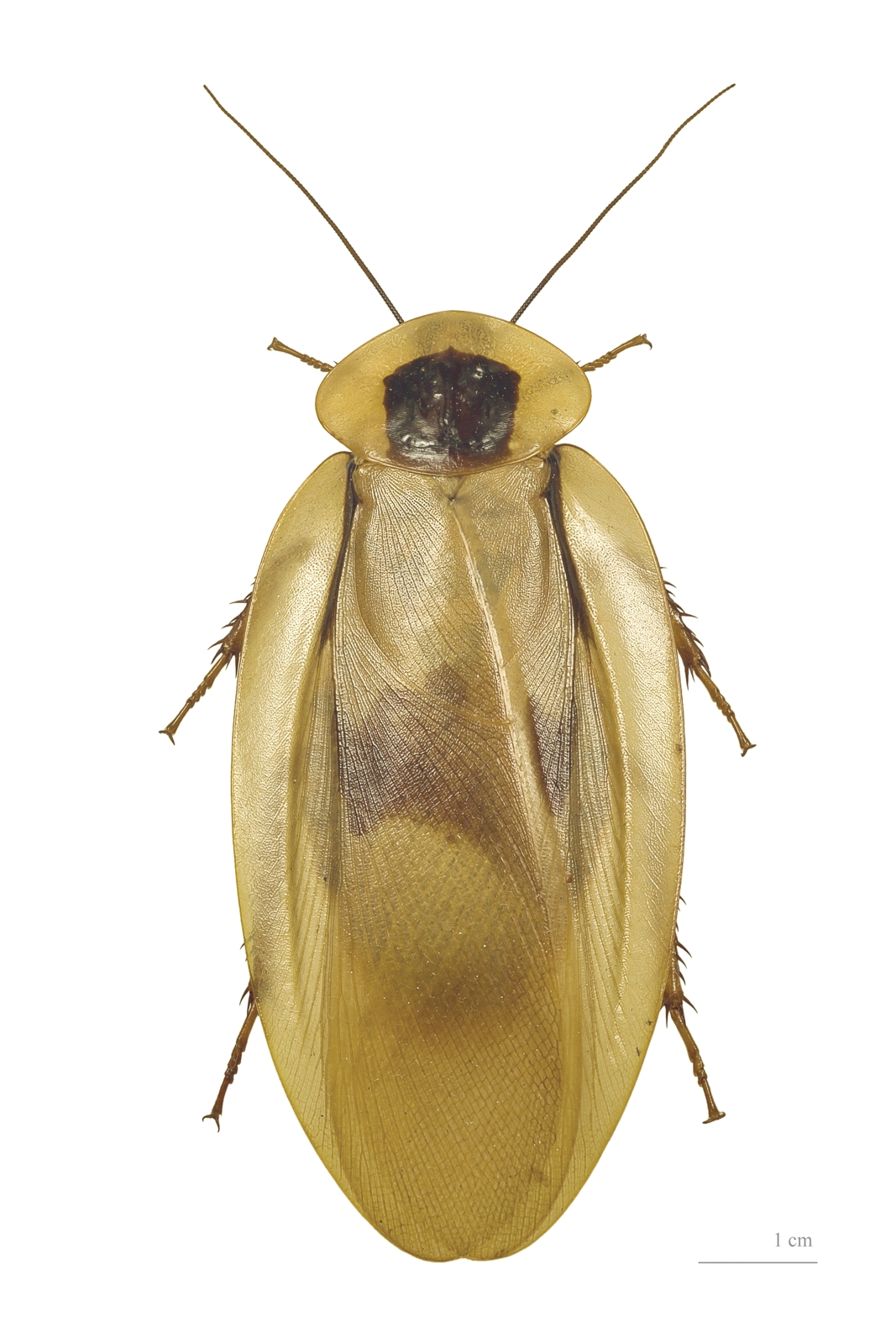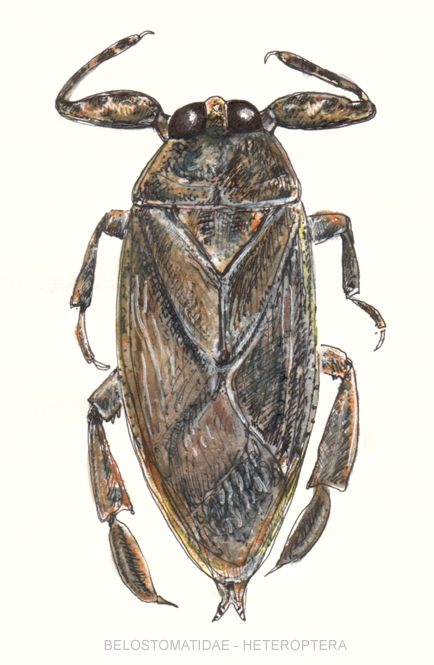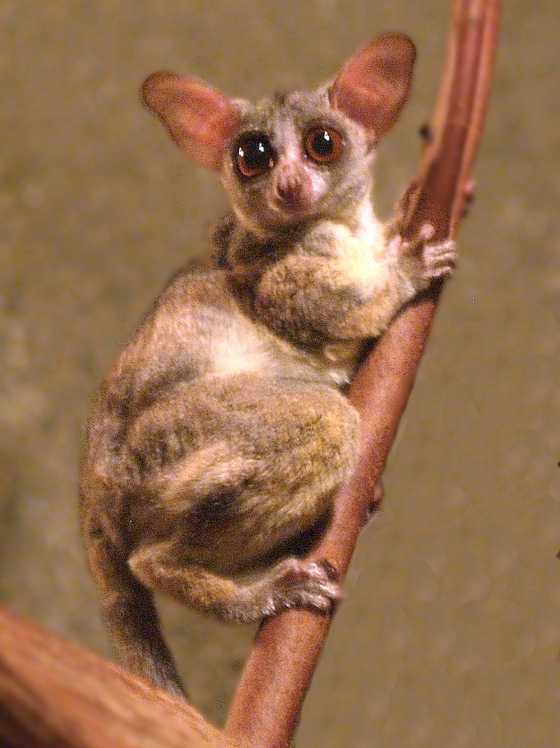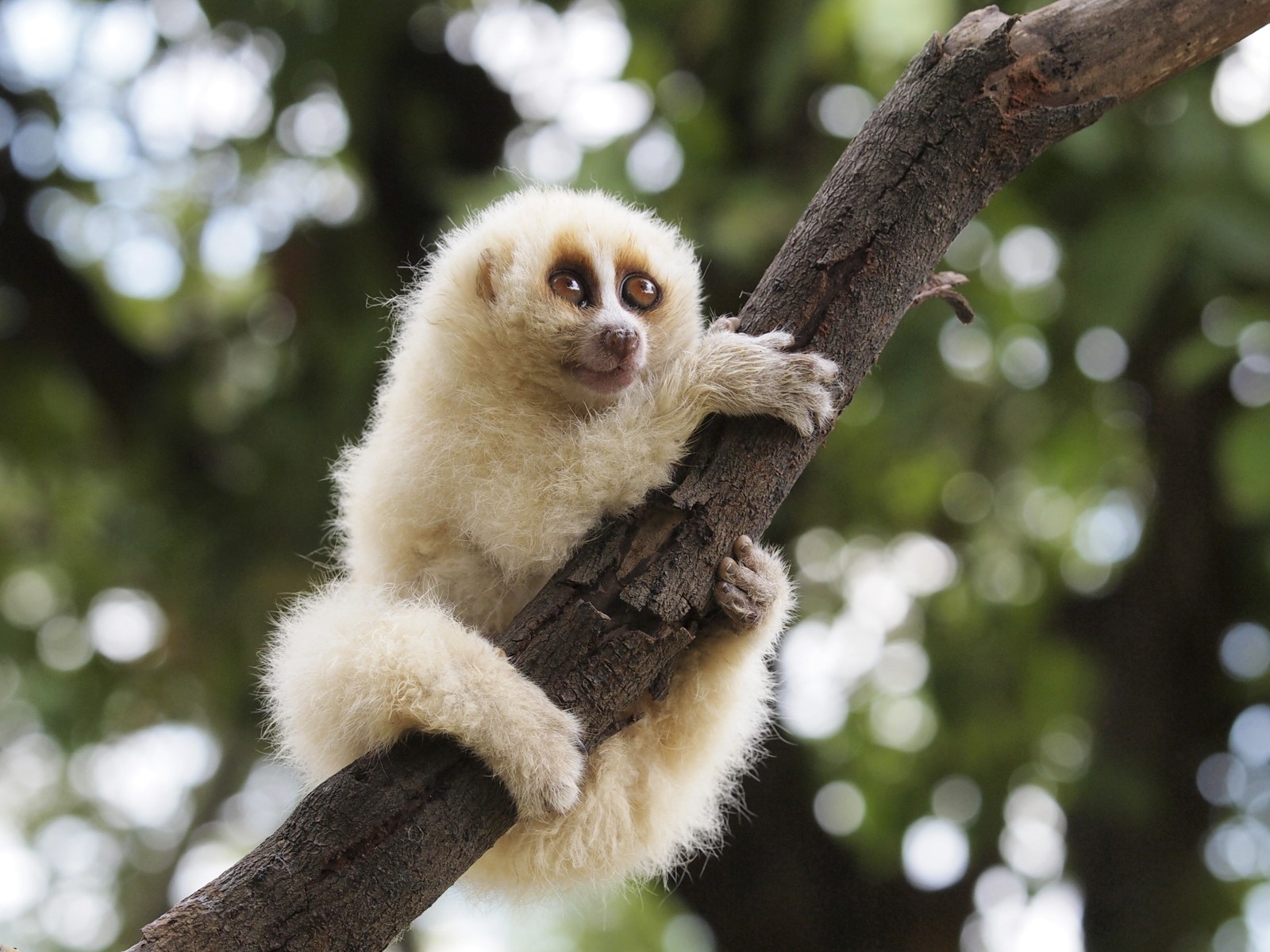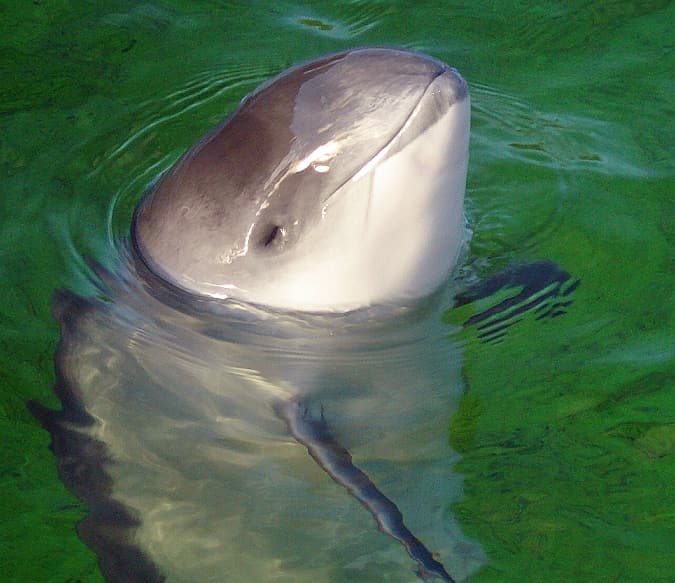Cassowary vs Ostrich: A Complete Comparison
When comparing the Cassowary vs Ostrich, we’re examining two of nature’s most remarkable flightless birds. While the Ostrich claims the title of world’s largest bird at up to 9 feet (2.75 meters) tall, the Cassowary stands as perhaps the most dangerous, capable of inflicting serious injury with its 5-inch (12 cm) dagger-like claws.
These prehistoric-looking ratites evolved along different paths, with the Ostrich adapting to Africa’s open savannas and the Cassowary becoming master of dense rainforest environments. Their distinct adaptations showcase fascinating examples of convergent evolution among flightless birds.
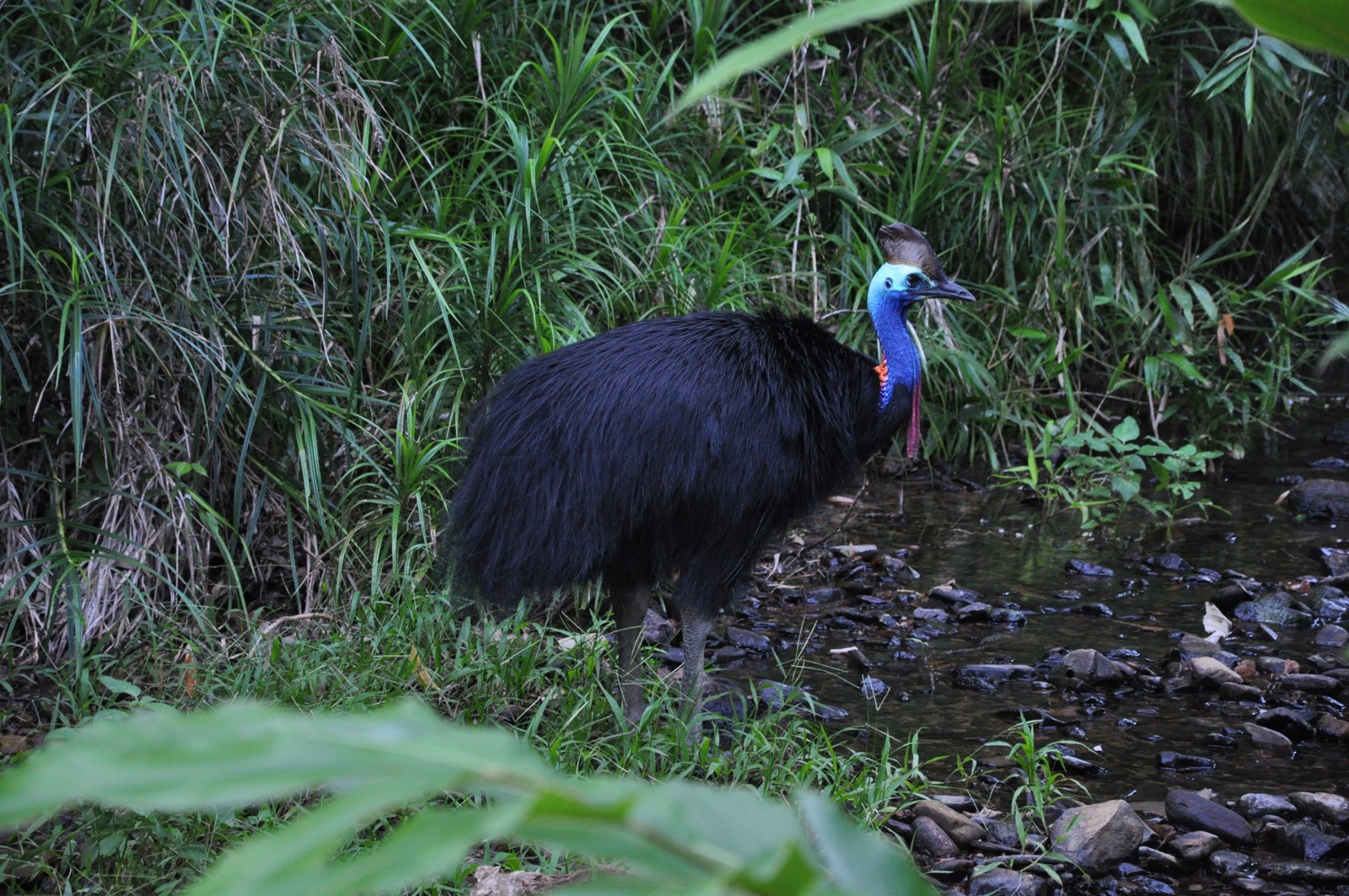
© Dmitry Brant / CC BY-SA 4.0
The Southern Cassowary, photographed here in its native rainforest habitat, showcases its distinctive blue neck, prominent casque, and powerful build that makes it the apex avian predator of its ecosystem.
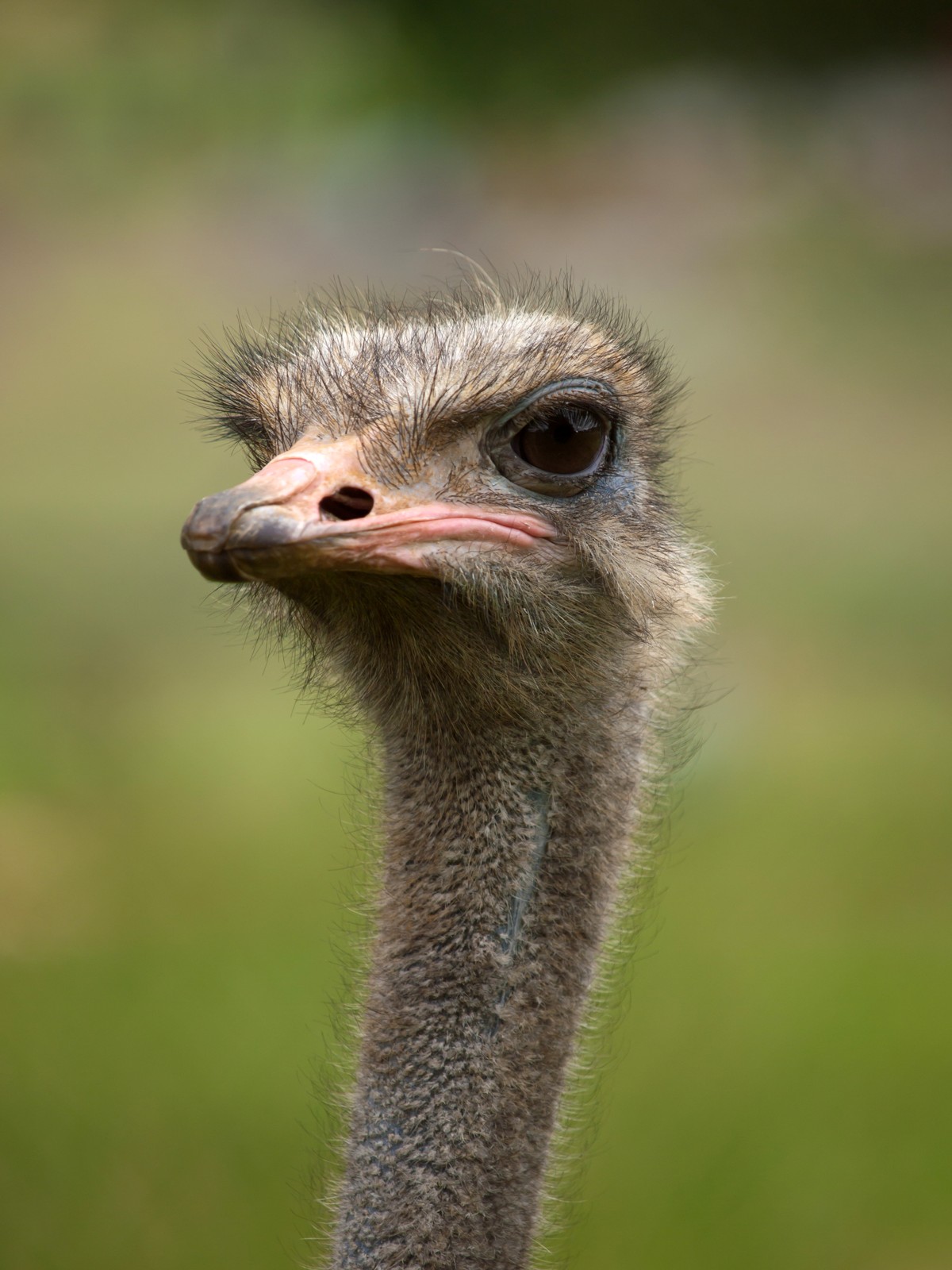
© William Warby / CC BY 2.0
The Common Ostrich demonstrates its characteristic alert posture and keen vision that helps it spot predators across vast African plains, where it can reach speeds of up to 43 mph (70 km/h).
Key Differences Between Cassowary and Ostrich
| Feature | Cassowary | Ostrich |
|---|---|---|
| Height | Up to 6.6 ft (2 m) | Up to 9 ft (2.75 m) |
| Weight | Up to 130 lbs (59 kg) | Up to 320 lbs (145 kg) |
| Top Speed | 31 mph (50 km/h) | 43 mph (70 km/h) |
| Habitat | Tropical rainforest | Savanna and desert |
| Defense Mechanism | Razor-sharp claws | Powerful kicks |
| Diet | Primarily fruit | Omnivorous |
Habitat and Distribution
The Cassowary has evolved as a specialist of dense tropical rainforests in northeastern Australia and New Guinea. Their powerful legs and tough feathers allow them to push through thick undergrowth with ease. In contrast, Ostriches thrive in open African savannas and semi-desert regions, where their height and exceptional vision give them advantages in spotting predators.
Physical Capabilities and Defense
While both birds possess formidable defensive capabilities, they employ different strategies. Cassowaries are equipped with 5-inch (12 cm) dagger-like claws on their inner toes, which they can use with devastating effect in close combat. Ostriches rely on powerful forward kicks that can deliver 2,000 pounds (907 kg) of force - enough to kill a lion with a single strike.
Behavioral Differences
Cassowaries are typically solitary animals, coming together only for breeding. They’re known for being highly territorial and aggressive when threatened. Ostriches, however, often form social groups and use complex cooperative behaviors, with males guarding harems of females and sharing incubation duties.
Diet and Feeding Habits
The dietary preferences of these birds reflect their distinct evolutionary paths:
-
Cassowary Diet:
- Primarily frugivorous
- Over 238 species of fruits documented
- Occasional insects and small vertebrates
-
Ostrich Diet:
- Opportunistic omnivores
- Plants, seeds, and roots
- Insects and small reptiles
- Can digest rough vegetation
Conservation Status and Threats
Both species face significant challenges in the modern world. Southern Cassowaries are listed as Vulnerable, with only 4,000-4,400 adults remaining in the wild. Habitat destruction and vehicle strikes pose major threats. While Ostriches are classified as Least Concern, some subspecies face local pressures from hunting and habitat loss.
Who Would Win in a Confrontation?
While such encounters would never occur naturally, analyzing their defensive capabilities reveals interesting insights. The Ostrich’s superior size and powerful kicks make it formidable, but the Cassowary’s forest-adapted agility and razor-sharp claws could prove equally dangerous. Both birds are capable of causing serious injury or death to large predators, including humans.
Reproduction and Parenting
A fascinating reversal of typical avian roles occurs in both species:
-
Cassowary:
- Males incubate eggs and raise chicks
- 3-5 eggs per clutch
- Incubation period: 50-52 days
-
Ostrich:
- Communal nesting system
- 20+ eggs per nest
- Incubation period: 42-46 days
Both species exemplify the remarkable diversity of ratite birds, showcasing how different environmental pressures can shape the evolution of flightless birds. While the Ostrich has become a master of speed and endurance in open spaces, the Cassowary has evolved into a powerful forest dwelling species, each perfectly adapted to their respective niches.
